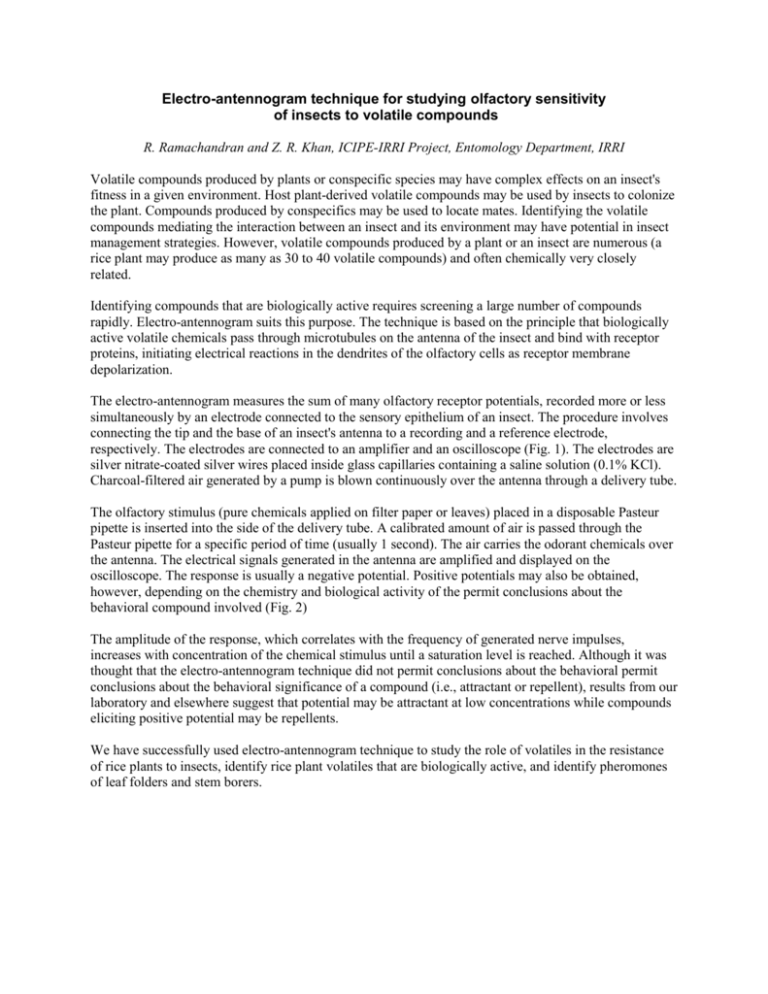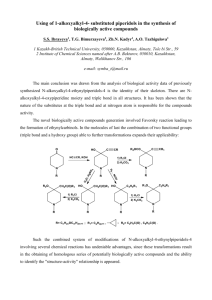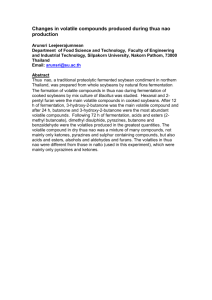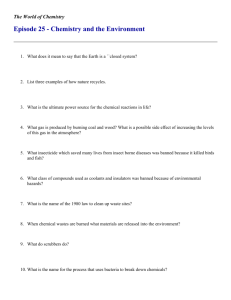Electro-antennogram technique for studying olfactory sensitivity of
advertisement

Electro-antennogram technique for studying olfactory sensitivity of insects to volatile compounds R. Ramachandran and Z. R. Khan, ICIPE-IRRI Project, Entomology Department, IRRI Volatile compounds produced by plants or conspecific species may have complex effects on an insect's fitness in a given environment. Host plant-derived volatile compounds may be used by insects to colonize the plant. Compounds produced by conspecifics may be used to locate mates. Identifying the volatile compounds mediating the interaction between an insect and its environment may have potential in insect management strategies. However, volatile compounds produced by a plant or an insect are numerous (a rice plant may produce as many as 30 to 40 volatile compounds) and often chemically very closely related. Identifying compounds that are biologically active requires screening a large number of compounds rapidly. Electro-antennogram suits this purpose. The technique is based on the principle that biologically active volatile chemicals pass through microtubules on the antenna of the insect and bind with receptor proteins, initiating electrical reactions in the dendrites of the olfactory cells as receptor membrane depolarization. The electro-antennogram measures the sum of many olfactory receptor potentials, recorded more or less simultaneously by an electrode connected to the sensory epithelium of an insect. The procedure involves connecting the tip and the base of an insect's antenna to a recording and a reference electrode, respectively. The electrodes are connected to an amplifier and an oscilloscope (Fig. 1). The electrodes are silver nitrate-coated silver wires placed inside glass capillaries containing a saline solution (0.1% KCl). Charcoal-filtered air generated by a pump is blown continuously over the antenna through a delivery tube. The olfactory stimulus (pure chemicals applied on filter paper or leaves) placed in a disposable Pasteur pipette is inserted into the side of the delivery tube. A calibrated amount of air is passed through the Pasteur pipette for a specific period of time (usually 1 second). The air carries the odorant chemicals over the antenna. The electrical signals generated in the antenna are amplified and displayed on the oscilloscope. The response is usually a negative potential. Positive potentials may also be obtained, however, depending on the chemistry and biological activity of the permit conclusions about the behavioral compound involved (Fig. 2) The amplitude of the response, which correlates with the frequency of generated nerve impulses, increases with concentration of the chemical stimulus until a saturation level is reached. Although it was thought that the electro-antennogram technique did not permit conclusions about the behavioral permit conclusions about the behavioral significance of a compound (i.e., attractant or repellent), results from our laboratory and elsewhere suggest that potential may be attractant at low concentrations while compounds eliciting positive potential may be repellents. We have successfully used electro-antennogram technique to study the role of volatiles in the resistance of rice plants to insects, identify rice plant volatiles that are biologically active, and identify pheromones of leaf folders and stem borers. 1. Line diagram of a setup for measuring electro-antennogram response of insects to volatile compounds. 2. (a) A typical negative potential elicited in response to stimulation with 1-hexanol. (b) A positive potential elicited in response to thymol. Ramachandran, R. and Khan, Z.R. 1990. Electro-antennogram technique for studying olfactory sensitivity of insects to volatile compounds. Int. Rice Res. Newsl. 15(5): 22-23.








